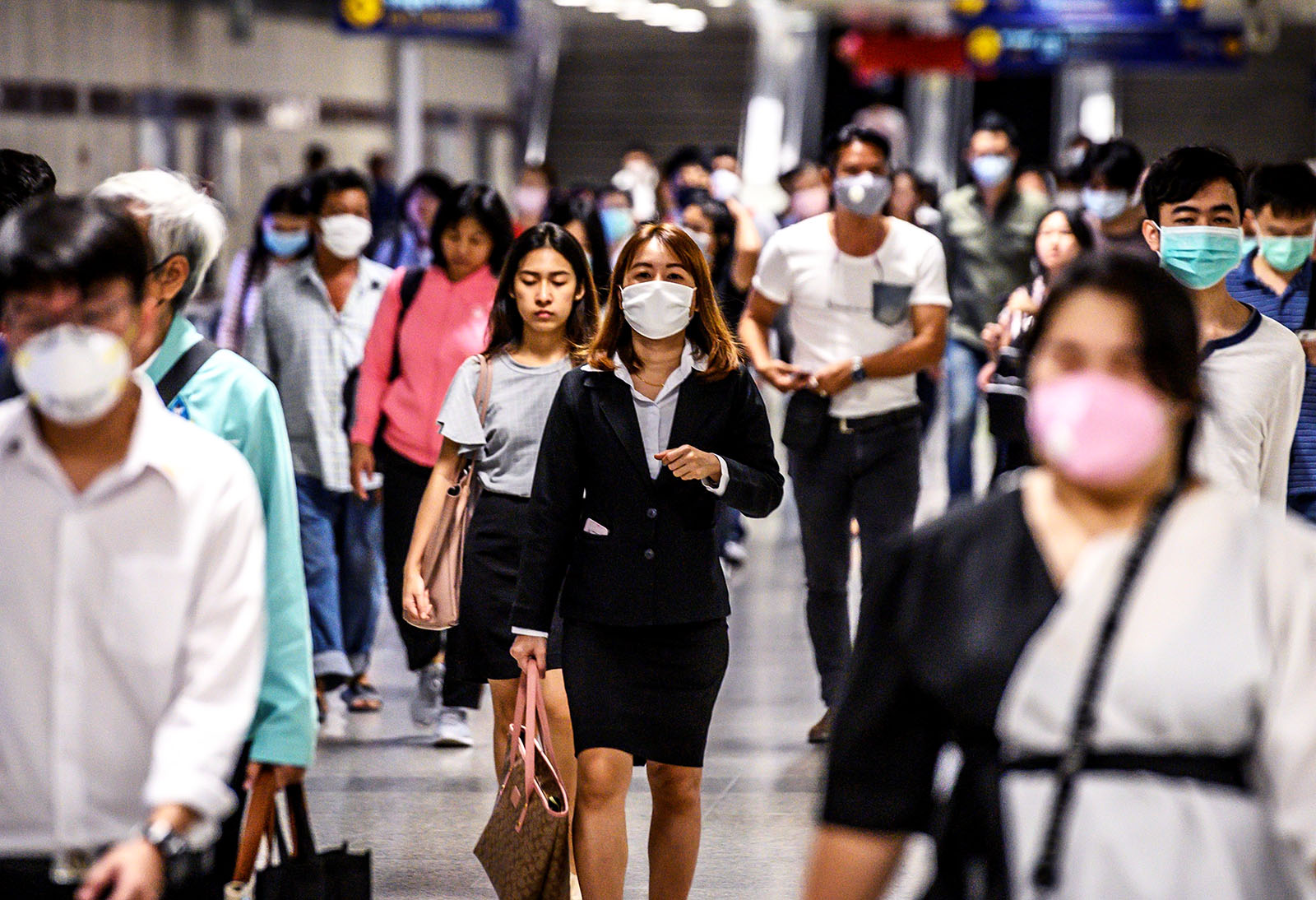How Employers Can Reduce the Social Anxiety of Returning to Work

Commuters wearing facemasks exit a metro station in Bangkok on March 4, 2020. One concern people have is about whether or not they will be able to maintain a work-life balance once they start commuting again.
Photo: Mladen Antonov/AFP via Getty Images
Many people are suffering social anxiety at the thought of having to go back to the office — after COVID-19 forced millions into a work-from-home lifestyle. We asked Dr. Jennifer Wild, a psychological scientist at the University of Oxford with expertise in risk and resilience, for guidance for employers as to how to handle this as employees start to return to offices.
WILD: It’s important for employers to recognize that some people may feel anxious about returning to the office because they have worries about social interactions after being in lockdown for such a long time.
Employers can normalize this feeling and encourage informal catch-ups, such as creating spaces where people can get together and start to socially mix as they did beforehand.
It may also help to include an informal catch up in meetings, such as taking a few minutes at the outset to ask team members what’s new and good with them.
Encouraging a Catchup Before Meetings
When people feel socially anxious, they have anxiety and fears about how they will come across to others. If it’s really severe, social anxiety can end up causing people to under-perform at school and work and can affect life decisions.
When people are socially anxious, their attention shifts to their feelings and fears of how they think they’ll come across to others. They may look down or avoid eye contact, all of which makes it difficult to accurately process how people are really responding to them.
One of the things that can help is to use the awareness of feeling self-conscious as a cue to look up and around. It becomes easier to discover that people are responding in a kind and friendly way. That’s something that an individual can do to help with their social anxiety.
BRINK: If someone feels too anxious to be in a meeting in person, should they join by Zoom instead?
WILD: My advice is that if somebody is feeling anxious about a meeting and is feeling a pull to join by Zoom, then they actually should join in-person, because it’s only through joining in-person that they will discover that people aren’t judging them negatively and their fears don’t happen.
If you join on Zoom and you’re feeling quite self-conscious, there’s a risk your focus will shift to monitoring how you are coming across and you won’t actually process what’s on your screen, meaning you won’t get good information about how people are really responding to you.
More often than not, people are kind and friendly, but we don’t discover this when we are monitoring ourselves and how we’re coming across.
Try to Join in Person
BRINK: So your advice is to try to re-engage if at all possible, because that will help the process of getting back.
WILD: Yes. It’s important to be really clear about what you’re worried will happen when you see colleagues again. If you go into work and you have a meeting with colleagues, be really specific. What do you think will happen?
Then look up and around, drop any sort of efforts to come across well and get really lost in the conversations. Afterward, ask yourself, did your fears come true? Did people reject you? Behave in such a way to suggest they were judging you negatively? Focus on what ways they were friendly and inclusive. This idea of putting our fears to the test is really one of the best ways we can overcome social anxiety.
We will have fluctuations and anxiety around returning to work, and being kind to ourselves increases our optimism and makes us better problem-solvers.
BRINK: Are you finding that people have lost some level of social skills after a year in lockdown?
WILD: That’s really hard to answer because many of us still have a high degree of social interactions, they’ve just taken place online.
I don’t think social skills have become worse because of lockdown. I just think that it’s been easier to avoid socializing during lockdown. So if you have a propensity to social anxiety and we’re in lockdown, it’s much easier to avoid interacting with people because you can turn your camera off on Zoom and do many things that require interacting with others, such as shopping, by using the internet.
Fear of Returning to Public Speaking
BRINK: You have been advising the university and other organizations on the return to work. What concerns have you been encountering?
WILD: There have been three concerns. One has been anxiety about catching COVID, which obviously will be addressed with the vaccine. The other concern that’s come up is a fear of public speaking. So having to do talks with people in the same room. And the third concern is about whether or not people will be able to maintain a work-life balance once they start commuting again.
When people have been doing talks by Zoom, perhaps they’ve been able to have more notes around them to help jog their memory of the kinds of things that they want to convey in the talk. But when they return to doing public speaking, a presentation in a meeting or in a lecture theater, they won’t necessarily have those prompts stuck all over their computer or on their desk, which may increase anxiety about forgetting what they want to say.
Focus on Facts, Not Feelings
I’ve run through several tools with employers and employees that are covered in my book Be Extraordinary that can help. The first is to “Focus on Facts, Not Feelings.” When we have a worry or we’re anxious about something, try to focus on facts rather than how anxious we’re feeling.
The next tool is called “Then Versus Now.” That’s really about breaking the link between the present and the past. People who have unwanted memories of past difficult social interactions perhaps experienced lockdown, for example, really focusing on what’s going on in their office environment today and how this is different to their memory. This practice can help to unhook the present from the past.
The next tool is called the “Three Minute Carrot,” which helps us to overcome avoidance. It’s about people starting a task that they have been avoiding and giving themselves permission to try the task or activity for three minutes and then reevaluating whether or not to carry on or stop. Three minutes of doing a task is usually enough to get started. And once you’ve started, this gives a breath of success — and release of dopamine, the feel-good factor — which can motivate you to keep going.
Plan Something Pleasurable
The next tool is “Planning Ahead,” which involves planning your next day in half hour chunks, assigning tasks to each half hour and including an enjoyable activity at some point during the day. The research shows that this tool dramatically reduces psychological distress.
And it frees up mental energy for challenging tasks the following day. Also by planning an enjoyable activity the following day and scheduling it, it means you’re more likely to do it, which can boost your well-being.
Employers could encourage staff to take one or two brief breaks during the day to catch up with each other, which could help to refamiliarize staff with informal interactions and help people feel less rusty with their social skills. If they know that the space is there, and they’re being encouraged to take a break and socialize with colleagues, this may make social interactions feel less daunting.
There’s one more thing that is worth saying and that is to be compassionate, to tap into self-compassion. We will have fluctuations and anxiety around returning to work, and being kind to ourselves increases our optimism and makes us better problem-solvers. Cultivating a compassionate mindset about our return to work will help us return happier and more confident.




